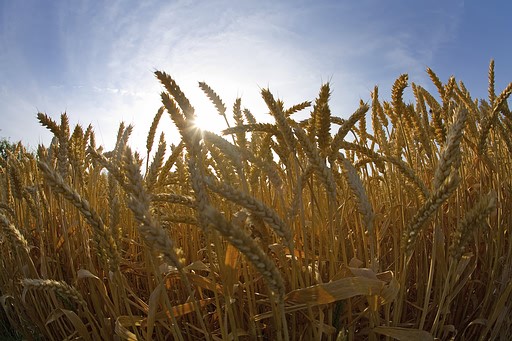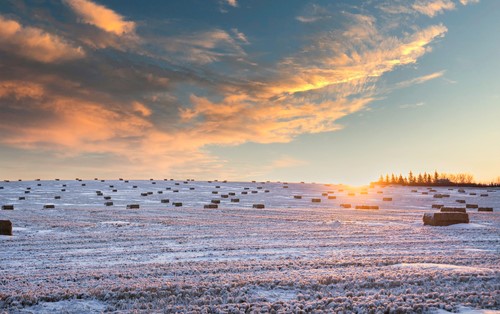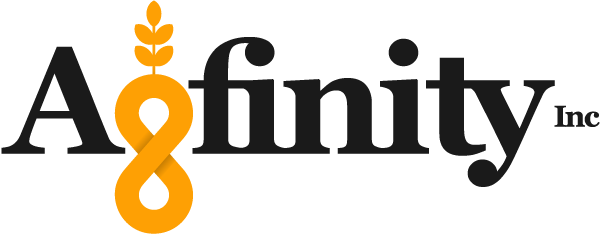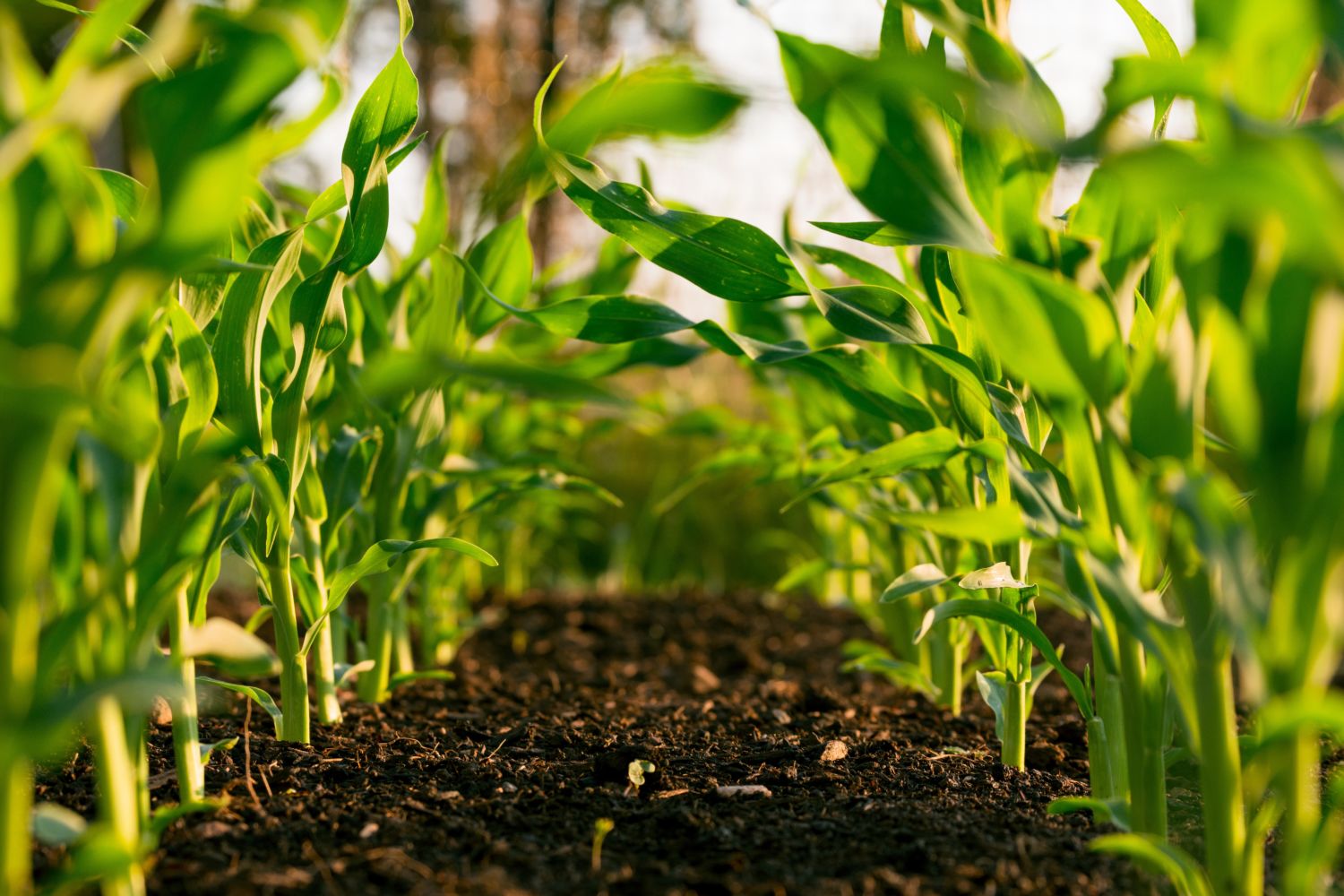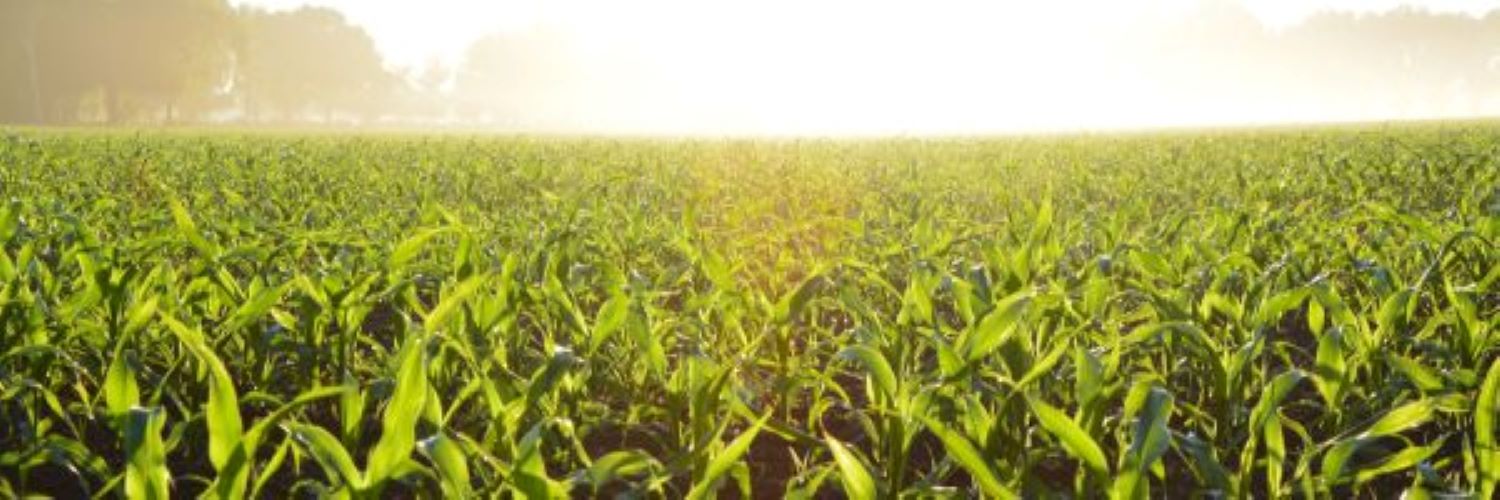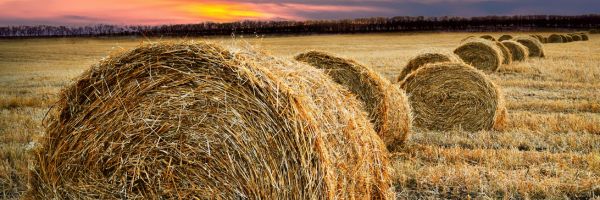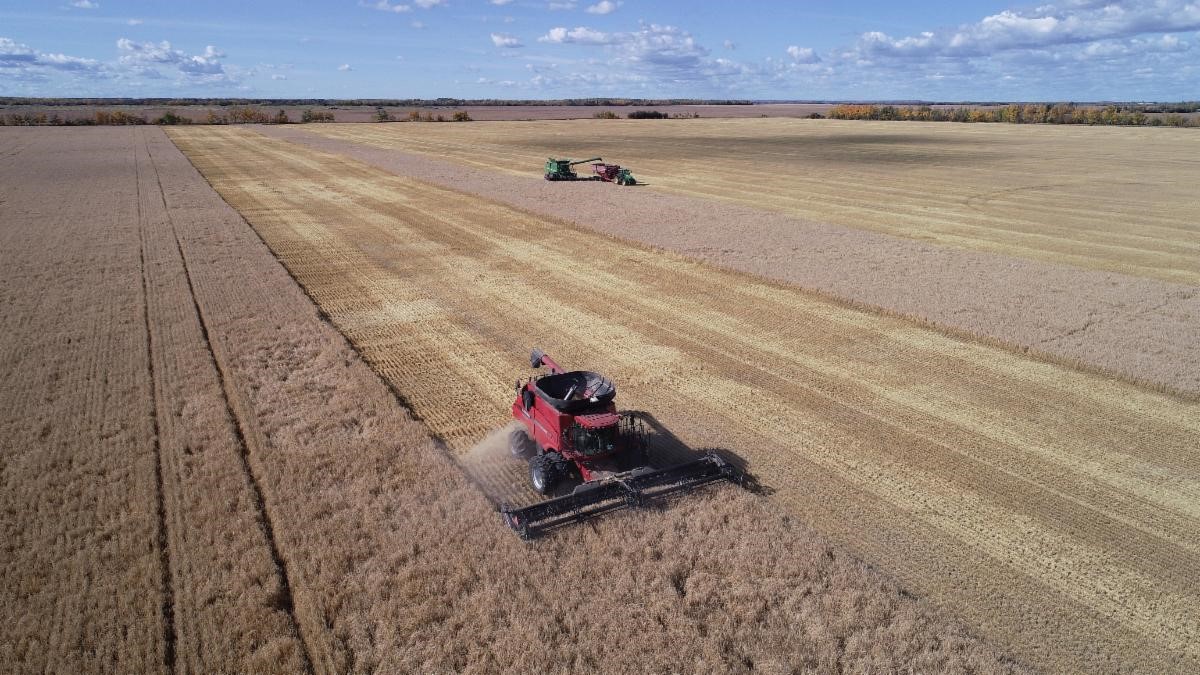
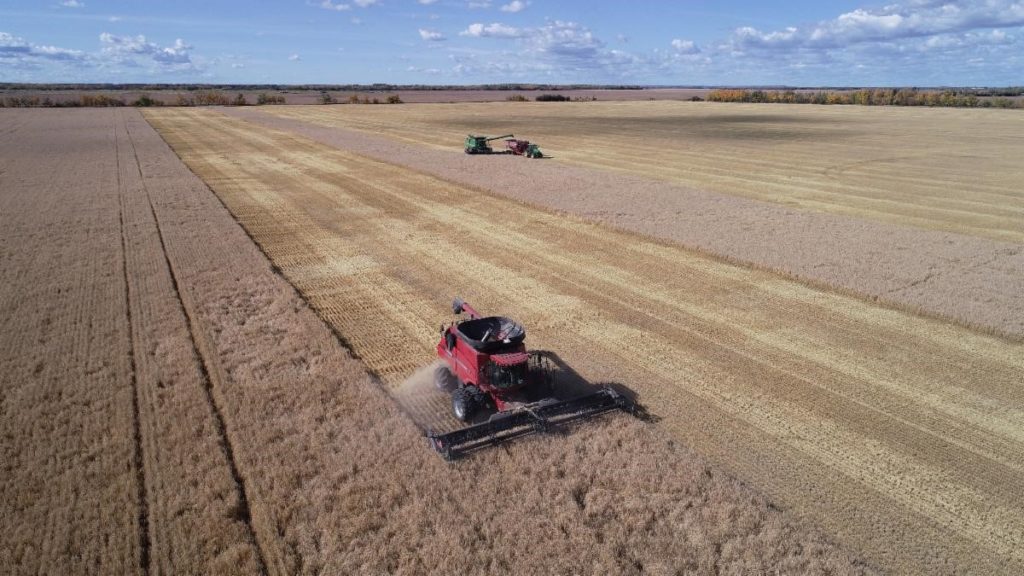
Thank you Gerben Bosma for the above photo!
With the Green Revolution of the 1930s and the technological advances of the later 20th century, certain elements of farming are taken as self-evident truths; with regards to correct land utilization, science and technology now determine the “best practices”. The history of farming, however, is one rooted in innovation, experimentation, and building off the knowledge of the past. In the eras before the development of synthetic fertilizer, pesticides, irrigation, and high-yielding crops, farming was dictated by trial-and-error – find what works and don’t do what doesn’t. Farmers of the past used this approach to create their own “best-practices”, and applied innovative methods through trial-and-error that are confirmed by the science of today. With that in mind, I am going to give you a brief history of agriculture with regards to the three-field rotation.
Mono-cropping (the process of growing the same crop year-after-year) generates real problems: namely, the depletion of soil nutrients, a decrease in the quality of soil structure, and the development of specialized weeds and pests. Although they may not have known the specific science of these problems or why they occurred, farmers of the past knew that they did occur and needed to be overcome. For the majority of early agriculture, the challenges of best utilizing available land and solving the problems of mono-cropping were overcome by implementing the two-field rotation. In this system, land was divided into two fields, and on any given year one field would be seeded while the other left fallow. This overcame the problems of nitrogen-depletion in the soil, but was inefficient – on any given year, only half of arable land was actually used to grow crops. Despite its inefficiencies, the two-field rotation was engrained in society and predominated in western Europe until the late-middle ages. Through experimentation, farming pioneers in the 9th century showed that the inefficiencies inherent of the two-field rotation could be alleviated by transitioning to a three-field rotation.
In the three-field rotation, land was centralized around the local village and divided into three fields separated by a strip of unploughed soil. Each field then had a specific role to play. Every growing season (European medieval farms employed both fall and spring sowings), one field was used to seed rye and wheat for human consumption; the other was used to seed barley and oats for livestock, and legumes to eat and fix nitrogen in the soil; and the last was left to lie fallow, growing weeds for additional grazing by livestock (whose manure would fertilize the soil). The positive effects of this system were many. First, the use of legumes and fallow land meant that nutrients in the soil would be replenished on a regular basis and that subsequent crops would not suffer from nitrogen-depleted earth. Next, land utilization was increased from 50% in the two-field rotation to 66% in the three-field rotation, meaning land that was previously only able to provide for subsistence could now produce a surplus and drive local economic growth. Last, the ability to simultaneously produce crops of livestock feed (particularly oats) alongside wheat for human consumption increased the amount and variety of livestock used to work fields, and related technologies (such as the horse collar and the moldboard plow) were developed. The three-crop rotation provided more food, stimulated the local economy, and created better soil that allowed for sustainable agriculture.
However, the three-field rotation represented a challenge to the current best-practices of the time. The two-field rotation had worked for thousands of years, and so society was built around that system and many did not want to deviate from what had been proven to work in the past. Despite its many benefits the three-field rotation involved re-structuring land and challenging the social order, and so took hundreds of years for full adoption in western Europe (until the 11th century or so).
I hope this article provides you with a little bit of knowledge you can use to impress your friends over coffee if the riveting topic of agricultural history ever comes up. But if not, and if your eyes are glazed completely over and the drool is just starting to come by this point, I will leave you with the main takeaway: don’t be afraid of change, innovation, and challenging the way things are. The three-field rotation was the result of experimentation to find what worked best, so take risks and be bold– if you are afraid to try something new, then you will always be stuck in the past. The person who says “this is how we’ve always done it” is the one trapped in the two-field rotation, while the one who says “let’s give it a shot and see what happens” might just find the three-field rotation of their own. And once you’re there, never stop improving; after all, what replaced the three-field rotation? The four-field rotation.
Because Farming is Forever
Andrew Kelm
Recent News
Here are some articles of interest that we are reading today.
Recent Trades on Agfinity.com
CW Feed CPSR Wheat (ID: 20076)
126.00 MT
DLVD Edmonton, AB
Aug 01 – Aug 31
$338.17/MT or $9.20/BU (Gross)
$334.67/MT or $9.11/BU (Net)
TRADED Jun 30, 2021
CW Feed Barley (ID: 20078)
60.00 MT
FOB Alameda, SK
Jun 29 – Jul 15
$302.05/MT or $6.58/BU (Gross)
$298.55/MT or $6.50/BU (Net)
TRADED Jun 29, 2021
OS CW Feed Barley (ID: 20077)
44.00 MT
FOB Fort Vermilion, AB
Jul 01 – Jul 15
$269.89/MT or $5.88/BU (Gross)
$266.39/MT or $5.80/BU (Net)
TRADED Jun 29, 2021
CW Feed Barley (ID: 20030)
132.00 MT
DLVD Edmonton, AB
Jun 29 – Jul 16
$318.00/MT or $6.92/BU (Gross)
$314.50/MT or $6.85/BU (Net)
TRADED Jun 29, 2021
CW Feed Barley (ID: 20072)
44.00 MT
FOB St. Paul, AB
Jun 28 – Jul 31
$308.93/MT or $6.73/BU (Gross)
$305.43/MT or $6.65/BU (Net)
TRADED Jun 29, 2021
#1 CWRW (ID: 20075)
88.00 MT
FOB Redcliff, AB
Jun 30 – Jul 15
$323.00/MT or $8.79/BU (Gross)
$319.50/MT or $8.70/BU (Net)
TRADED Jun 29, 2021
CW Feed Barley (ID: 19941)
88.00 MT
FOB Kitscoty, AB
Jun 28 – Jul 31
$314.73/MT or $6.85/BU (Gross)
$311.23/MT or $6.78/BU (Net)
TRADED Jun 28, 2021
Feed Oats (ID: 20063)
42.00 MT
FOB Bashaw, AB
Jun 29 – Jul 31
$238.64/MT or $3.68/BU (Gross)
$235.14/MT or $3.63/BU (Net)
TRADED Jun 28, 2021
#1CW CPSR Wheat (ID: 20061)
132.00 MT
FOB Rimbey, AB
Jul 01 – Jul 31
$323.50/MT or $8.80/BU (Gross)
$320.00/MT or $8.71/BU (Net)
TRADED Jun 28, 2021
CW Feed Barley (ID: 20066)
26.00 MT
DLVD Strathmore, AB
Jul 01 – Aug 06
$311.34/MT or $6.78/BU (Gross)
$307.84/MT or $6.70/BU (Net)
TRADED Jun 28, 2021
CW Feed HRS Wheat (ID: 20067)
44.00 MT
FOB Entwistle, AB
Jun 29 – Jul 15
$317.66/MT or $8.65/BU (Gross)
$314.16/MT or $8.55/BU (Net)
TRADED Jun 28, 2021
CW Feed Barley (ID: 20074)
44.00 MT
FOB Three Hills, AB
Jul 01 – Jul 31
$307.84/MT or $6.70/BU (Gross)
$304.34/MT or $6.63/BU (Net)
TRADED Jun 28, 2021
NC CW Feed Barley (ID: 19997)
132.00 MT
FOB Carstairs, AB
Nov 01 – Jan 21
$282.58/MT or $6.15/BU (Gross)
$279.08/MT or $6.08/BU (Net)
TRADED Jun 25, 2021
OS CW Feed Barley (ID: 20056)
174.00 MT
FOB Jarvie, AB
Jun 24 – Jul 15
$292.00/MT or $6.36/BU (Gross)
$288.50/MT or $6.28/BU (Net)
TRADED Jun 25, 2021
Heated Canola (ID: 20045)
34.00 MT
DLVD Edmonton, AB
Jun 25 – Jul 10
$748.75/MT or $16.98/BU (Gross)
$743.25/MT or $16.86/BU (Net)
TRADED Jun 24, 2021
OS CW Feed Barley (ID: 20040)
44.00 MT
FOB Minburn, AB
Jun 24 – Jul 15
$302.05/MT or $6.58/BU (Gross)
$298.55/MT or $6.50/BU (Net)
TRADED Jun 24, 2021
#2CW Oats (ID: 20055)
72.00 MT
FOB Innisfail, AB
Jun 25 – Jul 31
$250.00/MT or $3.86/BU (Gross)
$246.50/MT or $3.80/BU (Net)
TRADED Jun 24, 2021
OS CW Feed SWS Wheat (ID: 20007)
44.00 MT
FOB St. Paul, AB
Jun 25 – Jul 30
$297.45/MT or $8.10/BU (Gross)
$293.95/MT or $8.00/BU (Net)
TRADED Jun 24, 2021
CW Feed HRS Wheat (ID: 20052)
44.00 MT
FOB Smoky Lake, AB
Jul 19 – Aug 20
$319.32/MT or $8.69/BU (Gross)
$315.82/MT or $8.60/BU (Net)
TRADED Jun 24, 2021
Feed Oats (ID: 20042)
44.00 MT
FOB Marwayne, AB
Jun 28 – Jul 31
$237.88/MT or $3.67/BU (Gross)
$234.38/MT or $3.61/BU (Net)
TRADED Jun 23, 2021
CW Feed Barley (ID: 20044)
220.00 MT
FOB St. Paul, AB
Jun 22 – Jul 31
$300.00/MT or $6.53/BU (Gross)
$296.50/MT or $6.46/BU (Net)
TRADED Jun 23, 2021
NC CW Feed Barley (ID: 20017)
440.00 MT
FOB Vermilion, AB
Sep 15 – Nov 19
$258.41/MT or $5.63/BU (Gross)
$254.91/MT or $5.55/BU (Net)
TRADED Jun 23, 2021
CW Feed Barley (ID: 20032)
44.00 MT
FOB Ponoka, AB
Jun 23 – Jul 21
$314.73/MT or $6.85/BU (Gross)
$311.23/MT or $6.78/BU (Net)
TRADED Jun 22, 2021
NC #1CW Canola (ID: 20002)
42.00 MT
FOB Fort Vermilion, AB
Nov 01 – Dec 31
$674.99/MT or $15.31/BU (Gross)
$671.49/MT or $15.23/BU (Net)
TRADED Jun 22, 2021
Feed Oats (ID: 19977)
44.00 MT
FOB Beaverlodge, AB
Jun 23 – Jul 31
$218.50/MT or $3.37/BU (Gross)
$215.00/MT or $3.32/BU (Net)
TRADED Jun 22, 2021
CW Feed SWS Wheat (ID: 20051)
132.00 MT
FOB Coronation, AB
Jun 22 – Jul 31
$315.82/MT or $8.60/BU (Gross)
$312.32/MT or $8.50/BU (Net)
TRADED Jun 22, 2021
NC #1CW Canola (ID: 20039)
84.00 MT
FOB Calmar, AB
Nov 01 – Nov 30
$697.29/MT or $15.81/BU (Gross)
$693.79/MT or $15.74/BU (Net)
TRADED Jun 22, 2021
OS Feed Yellow Peas (ID: 19221)
44.00 MT
FOB High Prairie, AB
Jun 28 – Jul 31
$264.21/MT or $7.19/BU (Gross)
$260.71/MT or $7.10/BU (Net)
TRADED Jun 22, 2021
CW Feed Barley (ID: 20049)
88.00 MT
FOB Beiseker, AB
Jun 22 – Jul 09
$307.73/MT or $6.70/BU (Gross)
$304.23/MT or $6.62/BU (Net)
TRADED Jun 22, 2021
CW Feed Barley (ID: 20041)
44.00 MT
FOB Edenwold, SK
Jun 23 – Aug 18
$276.78/MT or $6.03/BU (Gross)
$273.28/MT or $5.95/BU (Net)
TRADED Jun 22, 2021
CW Feed SWS Wheat (ID: 20043)
88.00 MT
FOB Coronation, AB
Jun 22 – Jul 31
$319.32/MT or $8.69/BU (Gross)
$315.82/MT or $8.60/BU (Net)
TRADED Jun 22, 2021
CW Feed Barley (ID: 20047)
44.00 MT
FOB Vegreville, AB
Jun 23 – Jul 31
$297.45/MT or $6.48/BU (Gross)
$293.95/MT or $6.40/BU (Net)
TRADED Jun 22, 2021
#1CW HRS Wheat (ID: 20027)
88.00 MT
FOB Alliance, AB
Jun 18 – Jul 09
$325.74/MT or $8.87/BU (Gross)
$322.24/MT or $8.77/BU (Net)
TRADED Jun 22, 2021
CW Feed Barley (ID: 20023)
33.00 MT
FOB Eston, SK
Jun 22 – Jul 31
$301.50/MT or $6.56/BU (Gross)
$298.00/MT or $6.49/BU (Net)
TRADED Jun 21, 2021
CW Feed Barley (ID: 20036)
44.00 MT
FOB Vegreville, AB
Jun 23 – Jul 30
$297.45/MT or $6.48/BU (Gross)
$293.95/MT or $6.40/BU (Net)
TRADED Jun 21, 2021
CW Feed Barley (ID: 20025)
220.00 MT
FOB Glendon, AB
Jun 19 – Jul 31
$292.86/MT or $6.38/BU (Gross)
$289.36/MT or $6.30/BU (Net)
TRADED Jun 21, 2021
CW Feed Barley (ID: 19938)
44.00 MT
FOB Ponoka, AB
Jun 17 – Jul 16
$302.05/MT or $6.58/BU (Gross)
$298.55/MT or $6.50/BU (Net)
TRADED Jun 21, 2021
OS Feed Yellow Peas (ID: 19969)
32.00 MT
FOB Rycroft, AB
Jun 11 – Jun 30
$297.23/MT or $8.09/BU (Gross)
$293.73/MT or $7.99/BU (Net)
TRADED Jun 18, 2021
CW Feed HRS Wheat (ID: 20026)
44.00 MT
FOB Alliance, AB
Jun 18 – Jul 09
$311.98/MT or $8.49/BU (Gross)
$308.48/MT or $8.40/BU (Net)
TRADED Jun 18, 2021
NC CW Feed Barley (ID: 20024)
174.00 MT
FOB Myrnam, AB
Oct 10 – Nov 30
$246.93/MT or $5.38/BU (Gross)
$243.43/MT or $5.30/BU (Net)
TRADED Jun 18, 2021
NC CW Feed Barley (ID: 19950)
44.00 MT
FOB St. Paul, AB
Sep 15 – Oct 31
$247.00/MT or $5.38/BU (Gross)
$243.50/MT or $5.30/BU (Net)
TRADED Jun 18, 2021
CW Feed Barley (ID: 20021)
176.00 MT
FOB St. Lina, AB
Jul 01 – Jul 31
$294.32/MT or $6.41/BU (Gross)
$290.82/MT or $6.33/BU (Net)
TRADED Jun 18, 2021
Feed Faba Beans (ID: 19989)
44.00 MT
FOB Gibbons, AB
Jun 19 – Jul 31
$333.65/MT or $9.08/BU (Gross)
$330.15/MT or $8.99/BU (Net)
TRADED Jun 18, 2021
CW Feed Barley (ID: 20022)
44.00 MT
FOB Bonnyville, AB
Jul 01 – Jul 31
$299.92/MT or $6.53/BU (Gross)
$296.42/MT or $6.45/BU (Net)
TRADED Jun 18, 2021
CW Feed Barley (ID: 19965)
44.00 MT
FOB Killam, AB
Jun 16 – Jul 31
$315.82/MT or $6.88/BU (Gross)
$312.32/MT or $6.80/BU (Net)
TRADED Jun 18, 2021
CW Feed CPSR Wheat (ID: 20011)
176.00 MT
FOB Hawk Hills, AB
Jun 17 – Jul 31
$290.28/MT or $7.90/BU (Gross)
$286.78/MT or $7.80/BU (Net)
TRADED Jun 17, 2021
CW Feed Barley (ID: 20014)
176.00 MT
FOB Milo, AB
Jun 17 – Jul 31
$312.00/MT or $6.79/BU (Gross)
$308.50/MT or $6.72/BU (Net)
TRADED Jun 17, 2021
CW Feed Barley (ID: 19998)
22.00 MT
FOB Cherhill, AB
Jun 18 – Jul 15
$285.00/MT or $6.21/BU (Gross)
$281.50/MT or $6.13/BU (Net)
TRADED Jun 17, 2021
CW Feed Barley (ID: 20000)
88.00 MT
FOB Bentley, AB
Jun 21 – Jul 31
$306.00/MT or $6.66/BU (Gross)
$302.50/MT or $6.59/BU (Net)
TRADED Jun 17, 2021
CW Feed Barley (ID: 19966)
132.00 MT
FOB Stony Plain, AB
Jun 18 – Jul 15
$311.23/MT or $6.78/BU (Gross)
$307.73/MT or $6.70/BU (Net)
TRADED Jun 17, 2021
CW Feed Barley (ID: 19983)
44.00 MT
FOB Barrhead, AB
Jun 16 – Jul 15
$307.84/MT or $6.70/BU (Gross)
$304.34/MT or $6.63/BU (Net)
TRADED Jun 17, 2021
CW Feed Barley (ID: 19995)
88.00 MT
FOB Thorsby, AB
Jun 16 – Jul 31
$312.43/MT or $6.80/BU (Gross)
$308.93/MT or $6.73/BU (Net)
TRADED Jun 16, 2021
CW Feed Barley (ID: 19934)
132.00 MT
FOB Rimbey, AB
Jun 17 – Jul 31
$319.32/MT or $6.95/BU (Gross)
$315.82/MT or $6.88/BU (Net)
TRADED Jun 16, 2021
OS CW Feed Barley (ID: 19930)
29.00 MT
FOB Pine Lake, AB
Jun 16 – Jul 31
$302.05/MT or $6.58/BU (Gross)
$298.55/MT or $6.50/BU (Net)
TRADED Jun 16, 2021
OS CW Feed Barley (ID: 19960)
44.00 MT
FOB Fort Vermilion, AB
Jun 17 – Jul 15
$264.00/MT or $5.75/BU (Gross)
$260.50/MT or $5.67/BU (Net)
TRADED Jun 16, 2021
CW Feed Barley (ID: 19987)
44.00 MT
FOB Boyle, AB
Jun 16 – Jul 31
$293.00/MT or $6.38/BU (Gross)
$289.50/MT or $6.30/BU (Net)
TRADED Jun 16, 2021
OS CW Feed Barley (ID: 19959)
44.00 MT
FOB Fort Vermilion, AB
Jun 17 – Jul 15
$264.00/MT or $5.75/BU (Gross)
$260.50/MT or $5.67/BU (Net)
TRADED Jun 16, 2021
OS Feed Oats (ID: 19985)
44.00 MT
FOB Provost, AB
Jun 17 – Jun 30
$231.00/MT or $3.56/BU (Gross)
$227.50/MT or $3.51/BU (Net)
TRADED Jun 16, 2021


